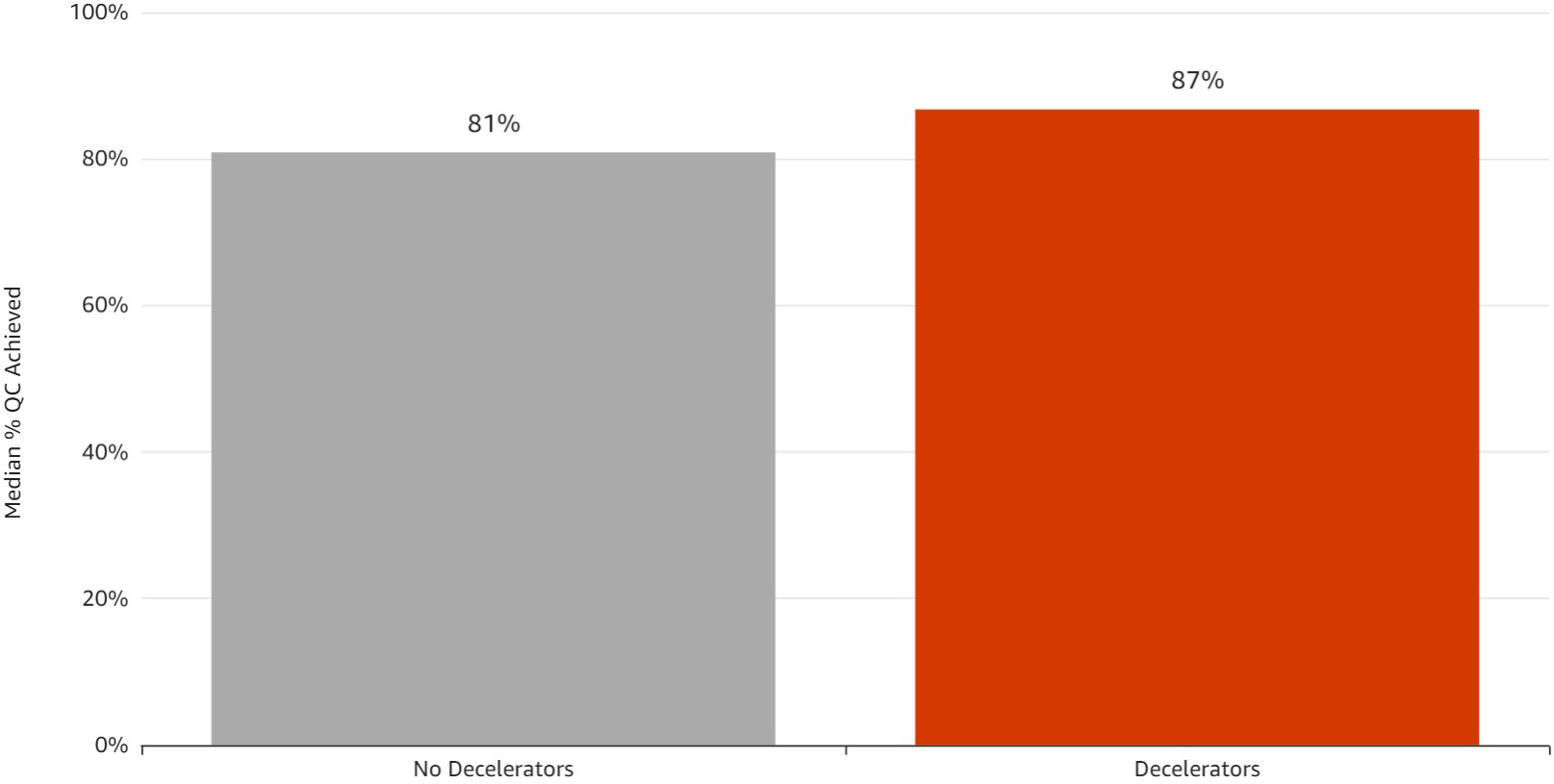In Software Sales Comp, Carrots Are More Effective Than Sticks
Carrots or sticks? Which work better for software sales incentive compensation? In our previous posts, we showed that “carrots”, in the form of lower quota-to-OTE ratios*, higher variable compensation, and accelerators – are extremely effective. What about “sticks” – decelerators which pay lower commission rates when reps perform below quota? Here’s a chart comparing performance between companies which use them and those that don’t:
Median % of Quota Capacity Achieved

- AE Teams with no decelerators achieved a median 81% of Quota Capacity*
- AE Teams using decelerators achieved 87% of QC
So decelerators do seem to help, though only a little. Another argument for decelerators: companies using them had a lower percentage of reps who missed quota badly (20%), vs. those who didn’t use them (25%).* Again, decelerators helped, but only a little. Bottom line, we think the jury’s still out on decelerators. Either way, it’s clear that “carrots” work much better than “sticks” when it comes to software sales comp. What do you think?
Want more data like this? Join BenchSights. We’re building a “Data Co-op” for the software sales industry. Your data is always kept anonymous and confidential. Membership is free and all active members providing data gain access to our free BenchSights reporting. Go to https://benchsights.com to get started.
* Data measured across 24 sales teams who reported Decelerator data, of which approximately one-third used Decelerators. OTE is on-target earnings that an AE earns when delivering quota. QC is total ARR bookings achieved by the AE team divided by the product of (1) avg. Quota per AE and (2) avg. number of AEs. AE performance “well below quota” is defined as AE performance of <75% of Quota.
